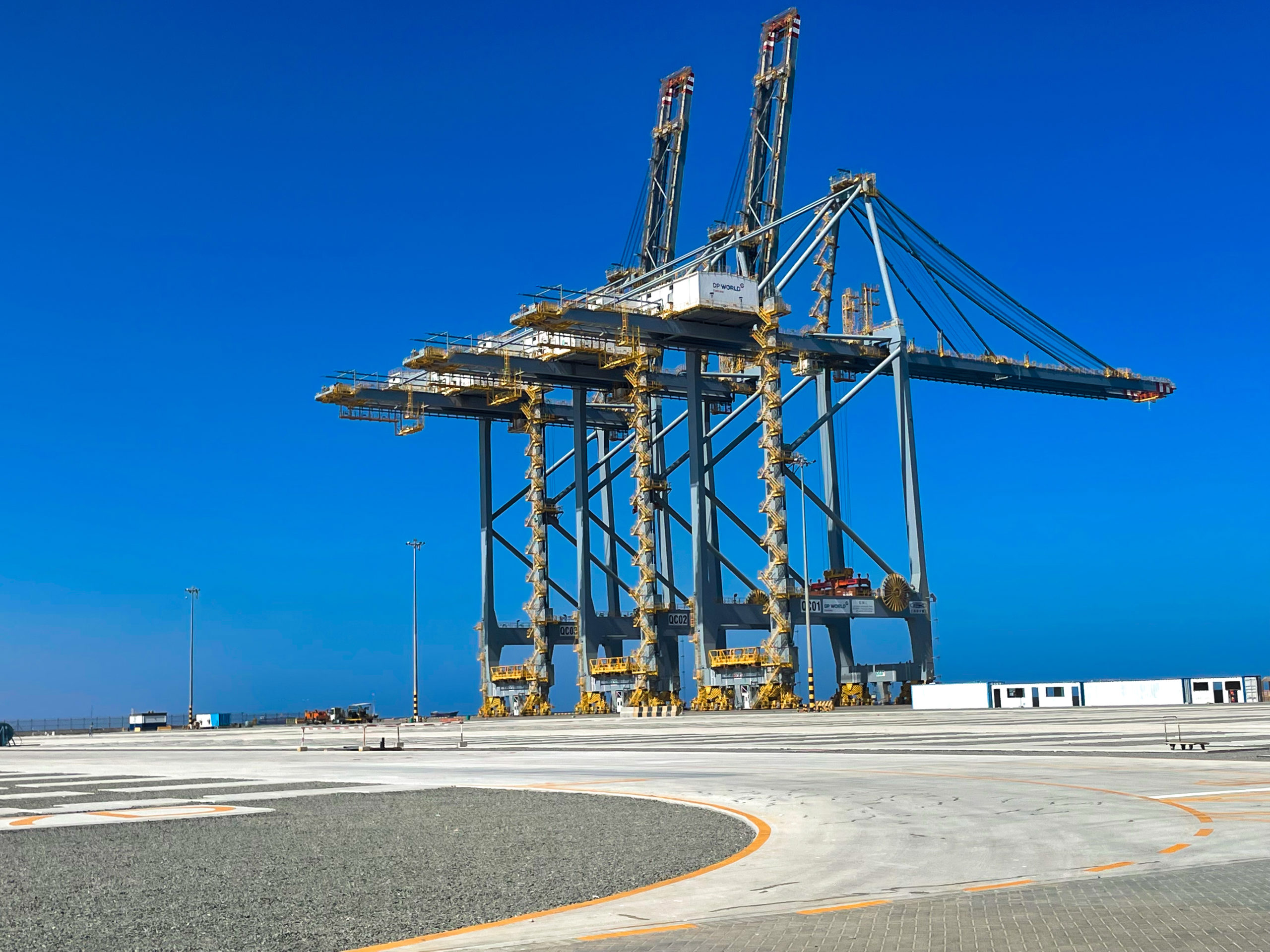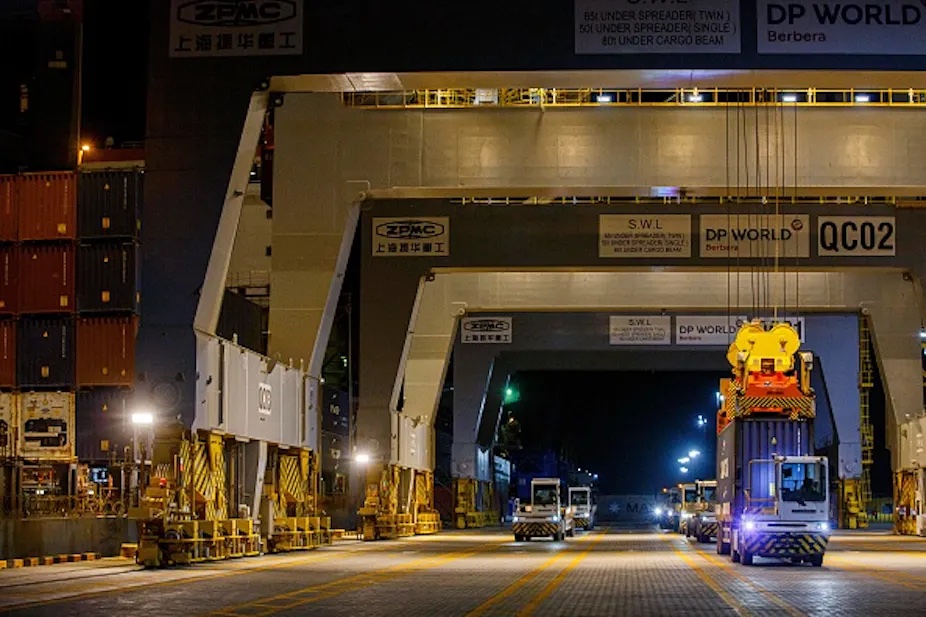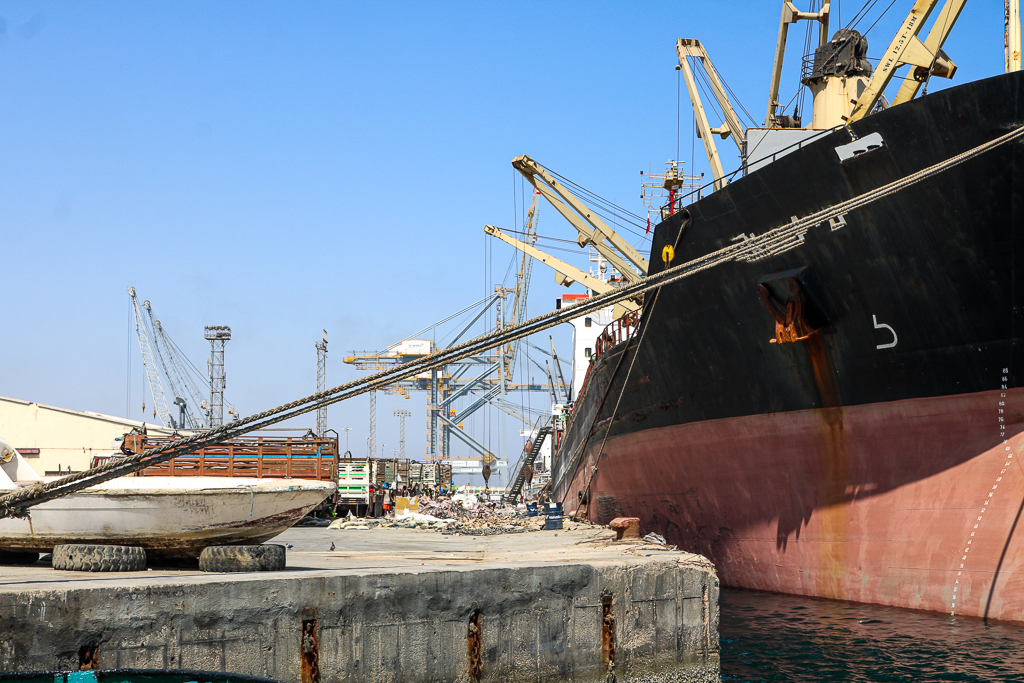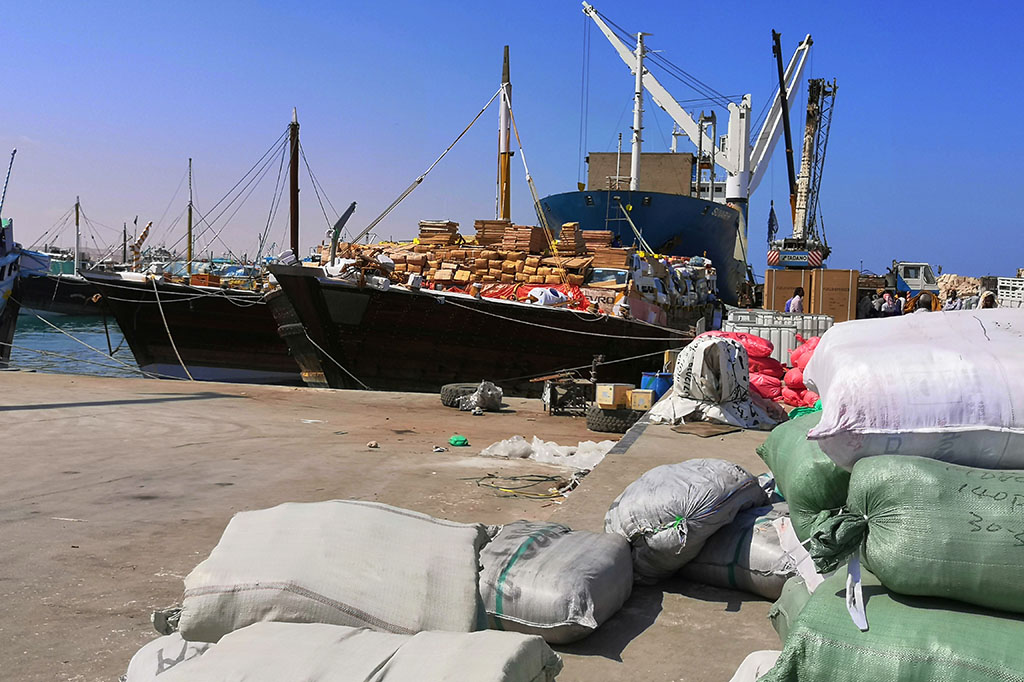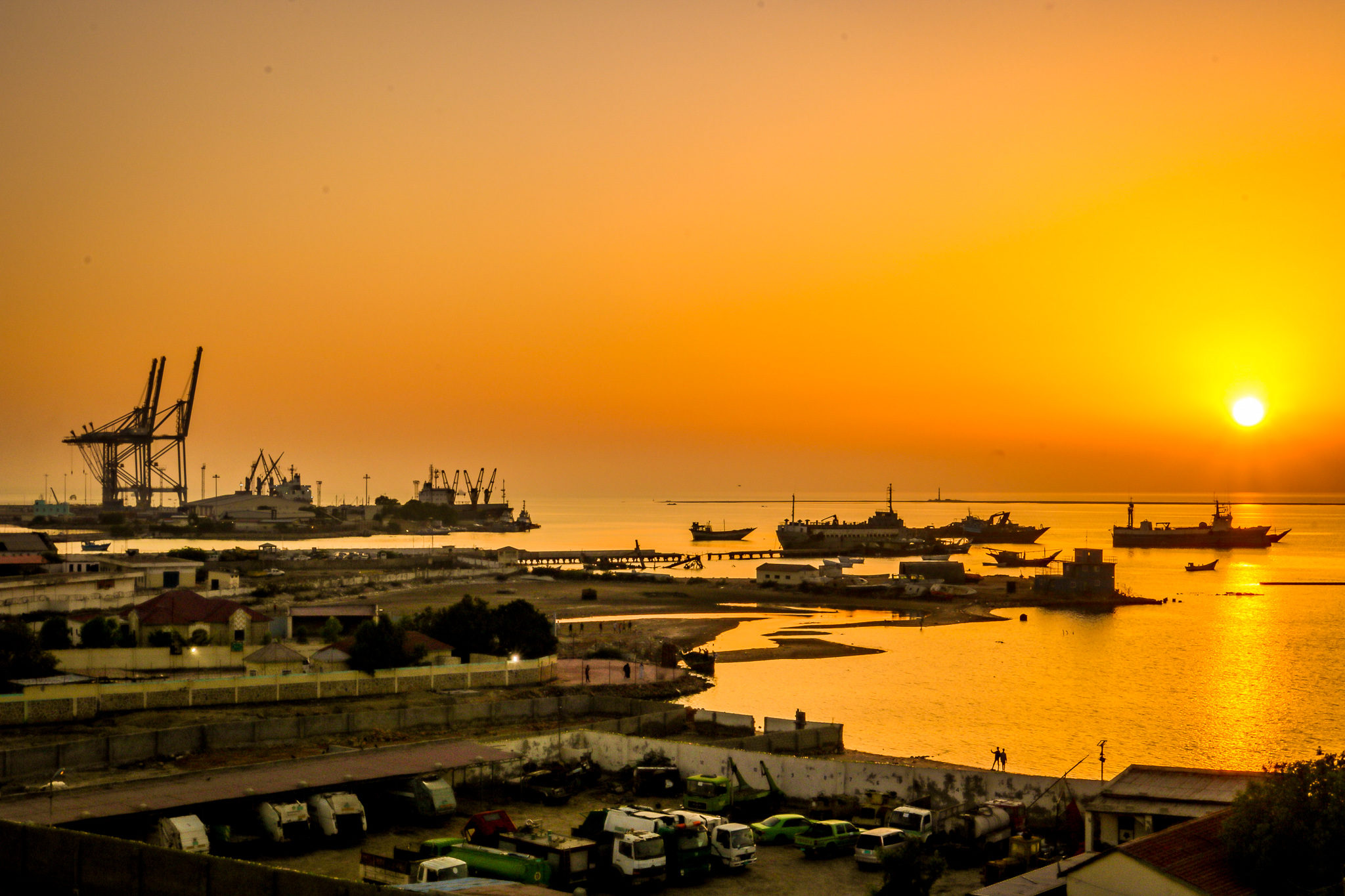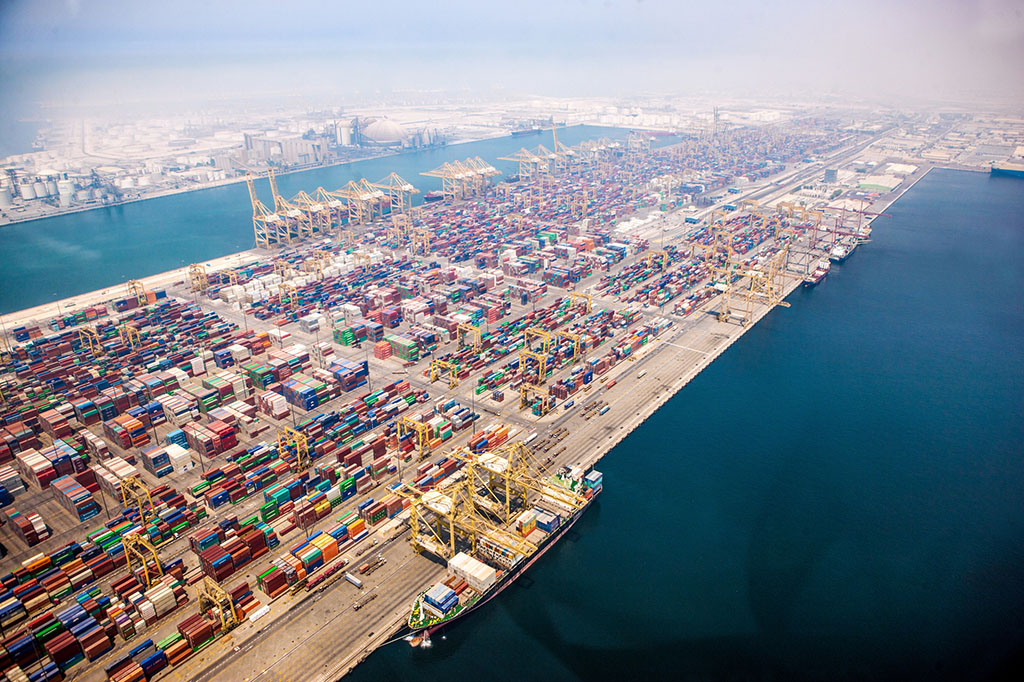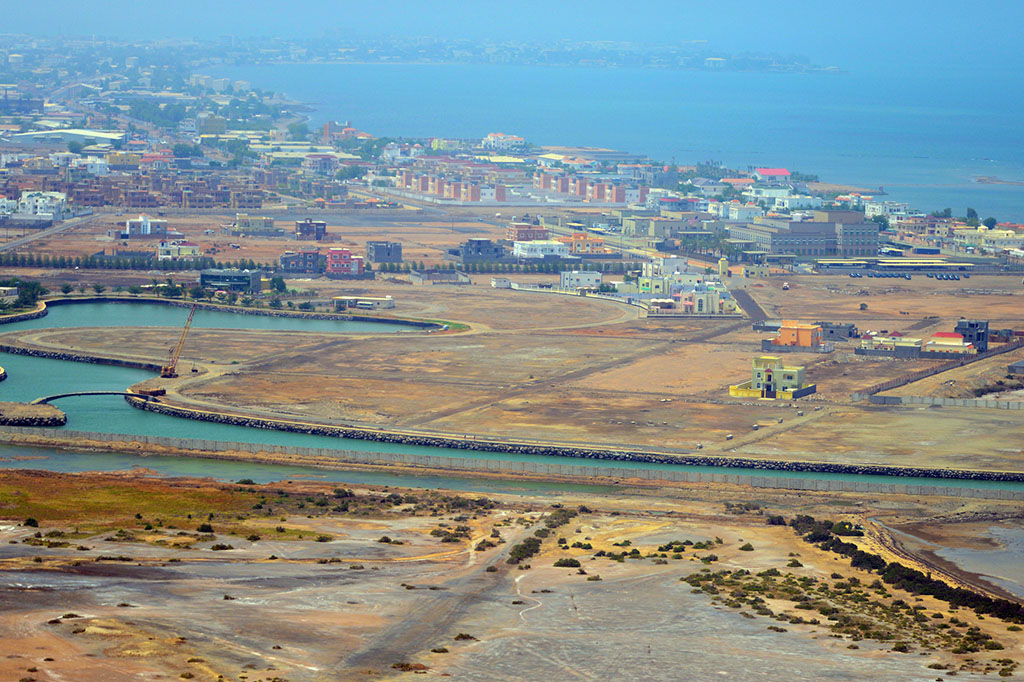Bosaso port is located on the shores of the Gulf of Aden. It is the main seaport of the Puntland State of Somalia, the north-eastern and oldest of the member states of the Federal Republic of Somalia. A 750 km long tarmac road links the port to Galkayo, a town at the southern border of Puntland that connects Bosasso to the central and southern parts of Somalia facilitating the circulation of goods and people. Bosaso port is one of the main hubs for import and export trading activities in Somalia. Most imported goods, including cars, electronics, building materials and food, are re-exported from the United Arab Emirates (UAE), followed by Oman, and Yemen. Exports, mainly livestock (goats, sheep, camels) and livestock-related goods (hides, skins), go to Saudi Arabia, UAE, Oman, and Yemen.
